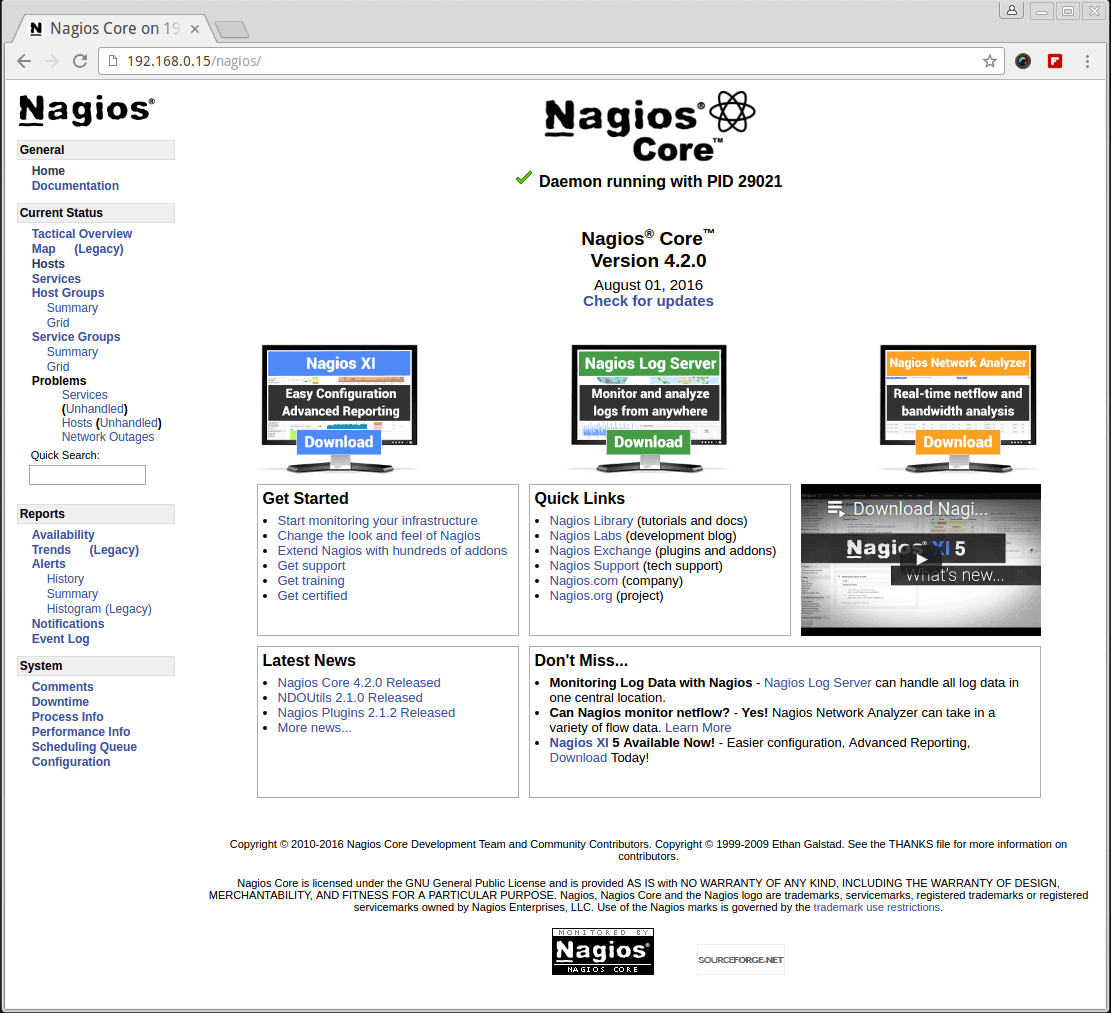How To Install Nagvis On Centos 7
Can I ask your help, I installed Nagvis 1.9.3 on my Nagios Core 4.3.4, but when I tried to access. I guess there's still an issue on CentOS 7. First things first, why CentOS 7 instead of 6? Well, CentOS 6 has issues with Python updating because of yum. Yes, you can install a separate instance, but it's not fun and it can break.
Sign Upthis turtorial is a follow up of my nagios series.
you need to have:
a working linux box
a install of nagios core
7 Steps total

Step 1: Download check mk
wget http://mathias-kettner.com/download/mk-livestatus-1.2.5i6p4.tar.gz
Step 2: unpack
tar -xzf *.tar.gz
and change dir cd ...
Step 3: excute as root
THIS STEPIS IMPORTANT EXECUTE AS ROOT !!!!!
./configure --with-nagios4
make
make install
Step 4: edit nagios.cfg
nano /usr/local/nagios/etc/nagios.cfg
and add
broker_module=/usr/local/lib/mk-livestatus/livestatus.o /usr/local/nagios/var/rw/live
Step 5: Restart nagios
/etc/init.d/nagios restart
Step 6: check the log file
nano /usr/local/nagios/var/nagios.log
check the log file if the broker is started
Step 7: download and install nagvis
now you can go to the website of nagvis and download and install the packages withou any issues.
http://www.nagvis.org/
i have added a host changed the backend to check_mk and it was all working after a few moths reasearch .... finaly
0 Comments
Nagios is the most popular open source monitoring system. Nagios will monitor servers, switches, applications and services. It alerts the System Administrator when something went wrong and also alerts back when the issues has been rectified.
In this tutorial we will learn how to install and configure Nagios 4.0.8 on CentOS 7/RHEL 7. To install Nagios, we will use its stable source code, which is available at Nagios site.
Install required packages and dependencies
First, install Apache and PHP:
Now, start httpd service:
Create Nagios user and group
Create a new Nagios user account and setup a password to this account:
Create a new Nagios group for allowing external commands to be submitted through the web interface. Add both the nagios user and the apache user to the group.
Install Nagios service and Nagios plugins
After installing required dependencies and adding user accounts. Lets start with Nagios core installation. First download Nagios source code from official site:
After installing Nagios service download Nagios plugins from the official Nagios page:
Configure Apache authentication
Now, need to setup apache authentication for user nagios admin:
After this restart Apache service:
Start Nagios service
Nagios 4.3.4
First, verify to Nagios install correctly:
Example output:
Now, start Nagios service and configure them to start automatically:
Access Nagios from web browser
Open Nagios administrator console with URL http://nagios-server-ip/nagios and enter the username as nagiosadmin and its password which we created in the earlier steps.
Thats it. Cheers!